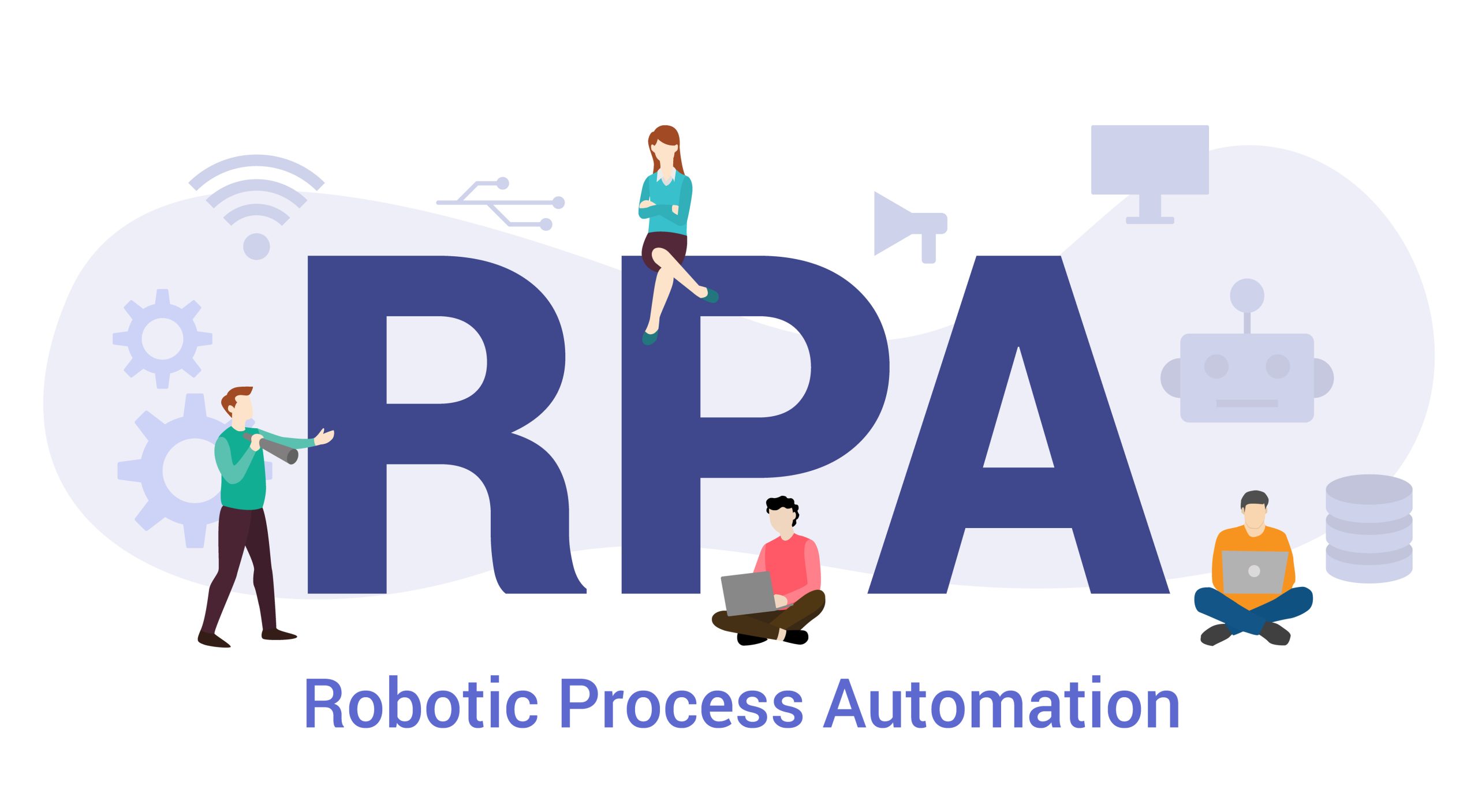Between 2020 and 2030, the global robotic process automation (RPA) market is projected to grow from $1 billion to $13 billion.
RPA has the potential to shift influence away from traditional IT-led technology projects by placing a greater degree of capabilities and responsibility in the hands of business owners.
This means new technologies and methodologies may be paired with new business process frameworks, centers of excellence (CoE), and non-IT stakeholders. Naturally, a maturity model is required to plan, execute, and scale the successes of RPA while continually minimizing risk.
A comprehensive automation maturity model can guide the scalability of the digital transformation, the progress and quality assurance over time, and the continuous testing required to evolve the automation initiative in line with the organization’s maturity level.
Whether your company has started on an automation journey or not, understanding the expectations of stakeholders can be very important to ensure you design a program that meshes well with company culture.
This leads to some important considerations:
1. Will the User-Developed Bots Be Viewed as a Threat to Organizational Lines of Responsibility?
RPA allows you to incorporate specialized knowledge and business rules into the bot. When your business process is no longer limited by the knowledge that your department possesses, you can expand the domains of work you perform and eliminate handoffs between departments. Reducing information handoffs can lead to fewer errors and higher velocity. It also enables you to design processes around customer needs and desires rather than the knowledge, skills, capabilities, and level of resources of individual departments.

You can only benefit from these improvements if your organization is open to rethinking who does what tasks and how those tasks get done. The drawdown of manual process and manual work is conceptually appealing for nearly any organization, but not all have the urgency, expertise, or initiative to transform fundamental portions of the business.
2. Will Citizen Developers Be Able to Acquire the Necessary Skills to Build Stable Automated Processes?
While RPA is considered a low code platform that is very powerful, it still requires technical prowess to do well. Ultimately, you need to ask yourself if you currently have, or can you build, a technically savvy employee base who can easily acquire the skills to build and maintain robust bots. If you are planning to leverage traditional IT resources with the technical chops, do they have the necessary business domain skills to understand business processes to the degree necessary to build bots that integrate well with the workforce and do not remove process employees completely from the equation?
If a bot fails, business owners may not be able to rely on IT for support as they do with traditional systems.
The level of testing, software engineering, capability maturity will expand over time, so even if the organization is behind the curve with skill sets, it must be open to investing more dollars in the future for true automation maturity and scalability.
3. Are the Citizen Developer Teams Staffed to Provide First-Line Support?
With RPA, one of the most common realizations business teams come to is the level of involvement required to ensure the bot-enabled business environment is stable. We recommend that process owners serve in the role of bot supervisor, monitoring the completion and quality of work performed in the same way they do for human employees. While well-thought-out design can ensure there is a good exchange of information between the bot and human, it’s no substitute for active ownership by the process owner.
If a business team is focused on building bots but not prepared to own the support and first-line maintenance, they can find themselves at a huge disadvantage with production bot stability. If a bot fails, business owners may not be able to rely on IT for support as they do with traditional systems. Process owners are well-versed in the people, departments, and flow of information associated with the automated process. This uniquely positions them to best provide first-line support but also puts traditional IT support teams at a disadvantage.
4. Are Process Owners Open to Optimization, and Do They Possess the Vision to Reimagine Business Process Once Human Effort and Specialized Knowledge Limitations Are No Longer a Factor?
RPA may require process changes to enable full automation or reduce the occurrence of exceptions.
Are your business process steps dictated by external rules, conventional wisdom, or historical precedence of the department? Are process owners open to making changes, or will you be forced to automate processes in such a way that leads to unstable bots? These factors can play an important role in your ability to successfully capture the benefits of RPA or win over critics within your organization who are resistant to change.
5. Will Process Owners and Staff View Bots as a Threat to Their Jobs or Control Over the Process and Outcomes?
Employees feeling threatened by a bot taking their job are one of the most common fears we have seen over the last several years. This fear can be reinforced when leadership either openly or covertly desires to exchange headcounts for bots.
Rapid technological innovation forces employers and employees to reconsider their working relationships with each other. And while eliminating manual tasks is generally well-received on a macro level, the introduction of artificial intelligence and machine learning on top of RPA (i.e., intelligent automation) may further heighten emotional sensitivities among staff. They may not see a future for themselves alongside continuous change.

Understanding where your organization falls related to this concern is critical to your ability to succeed with RPA. You won’t be able to prevent staff from thinking bots are coming for their jobs, but you can design a program that tackles this concern and then provide training and transparency regarding program goals.
Companies should build capabilities within the program to address the concern head-on through open and transparent dialog, training, and communication about their vision. Automation will create new opportunities for employee growth and increased skills is a message that must be manually delivered and refined.
6. With Much of the RPA Work Falling Into Operating and Not Capital Expense, Is a New Approach to IT Budgeting Needed to Ensure Critical IT Support Capabilities Are Not Shortchanged?
Budgeting is an area that has gotten little attention in RPA circles. Most of the focus has been on achieving ROI and using that savings to fund program growth. Savings tend to get funneled into the platform, licenses, and tools to facilitate RPA, followed by slowing the growth of department budgets as workload increases.
However, RPA requires a very similar commitment for support as other more traditional systems. Leaders tend to overlook the added burden on operational expense budgets in areas such as security, IT operations, and help desk.
Many IT budgets are fattened through capital expense work, but much of what happens in process automation may not qualify for capitalization. This can lead to a blind spot in budgeting where additional funding is not allocated because the work does not fall in annual capital planning activities. Therefore, no additional budget is allocated, yet when the number of production bots grows, there is a very real need for IT support but no additional money to adequately staff support teams.
Without proper funding, the effort to support bots may fall on business teams who are not prepared to absorb this work.
7. HR and Labor Issues Can Play a Role in an Organization’s Ability to Transform How Work Is Done and Who Does It.
Organizations that rely on union workers can be prohibited by labor contracts from changing job descriptions, moving existing employees to new job categories, or reducing headcount. Some questions organizations will need to tackle are:
- When bots replace work, will there be labor union and legal issues in replaced jobs?
- Will the introduction of new roles in RPA, such as bot supervisor or digital ambassador, be forced into existing job titles and descriptions due to the expense of creating new job titles and completing market compensation surveys?
- Will there even be good data available to determine the right mix of title, compensation, and responsibilities for these new RPA-centric roles?
Despite the potential pitfalls, many organizations can still benefit from bots serving as a force multiplier, enabling workers to keep up with increased demands, rather than just a cost-saver. RPA in a tight labor market can help fill the gap created by an inability to bring in additional resources to cope with growth in demand.
8. Do Program Goals Align With Organization Receptiveness?
What are the goals of the program sponsor and is the organization receptive to the level of change necessary to achieve program goals?
One of the common sources of friction with automation programs occurs when the program sponsor is looking for one type of outcome or benefit and the organization is focused on delivering something else. Early on in many automation programs, leaders were focused on pure cost savings, expecting whole jobs to be replaced by bots. Not only does this run counter to the capabilities of RPA and violate prudent safeguards, but most process owner aren’t receptive to the wholesale replacement of humans with bots.

In the interest of Segregation of Duties (SOD), it is good practice to provide bot credentials with narrow access based on the policy of least privilege rather than very broad access, as is the case with many human employees. If there is a penetration to the platform, a narrow credentialing approach will limit the damage prior to detection. This security best practice runs counter to the desire to build a bot to replace whole jobs.
Assuming your organization is focused on job takeout and prepared to allow bot credentials with wide access permissions, to be successful would require restructuring the jobs of remaining employees to offload their tasks that can be automated and assume the tasks that cannot. This presents a few challenges, such as:
- Does the employee possess the skill to complete the new job requirements?
- Is the company able to restructure a job description without violating labor laws or union rules?
- Does the reclassed job create a more enriching and rewarding experience for the employee or will it lead to higher turnover?
- Do the consolidated tasks violate separation of duties policies?
- Does the new job introduce new control risks?
There is no one size fits all approach to a Robotic Operating Center of Excellence. The value of assessing the readiness of your organization is to help identify the source of challenges inhibiting progress of your existing program, and in gaining insights into what preconditions you can address upfront to minimize risk and ensure high adoption of RPA. A good understanding of the needs and attitudes of all stakeholders will arm you with the necessary information to design a program with the right level of centralization, governance, capabilities, and controls.
Editor’s note: Updated March 2022